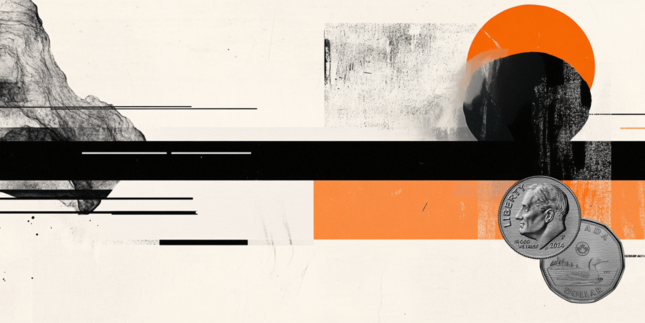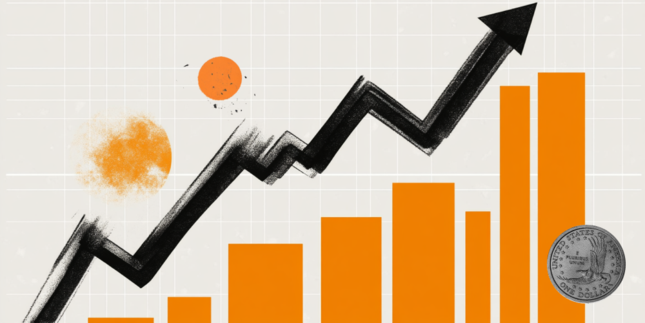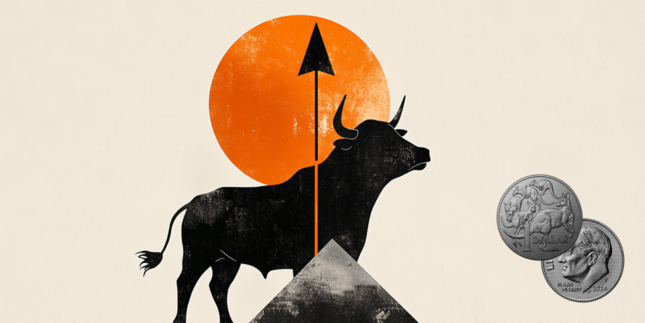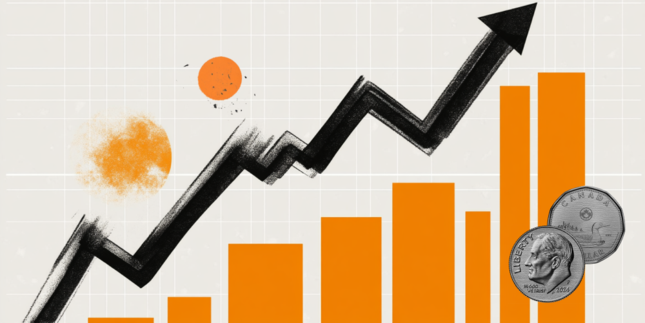Australia unemployment rate set to slightly rise as RBA considers timing for interest-rate cut
- The Australian Unemployment Rate is foreseen at 4% in December.
- Employment Change is expected to include a large increase in full-time jobs.
- AUD/USD corrected from multi-year lows, sellers retain control.
The Australian Bureau of Statistics (ABS) will release the December monthly employment report at 00:30 GMT on Thursday. The country is expected to have added 15K new job positions, while the Unemployment Rate is expected to tick higher from the 3.9% posted in November to 4.0%. The Australian Dollar (AUD) is at around 0.6200 against the US Dollar (USD), not far from a fresh multi-year low of 0.6130 posted in early January.
The ABS Employment Change report separates full-time from part-time jobs. According to its definition, full-time jobs imply working 38 or more hours per week and usually include additional benefits, but they mostly represent consistent income. On the other hand, part-time employment generally offers higher hourly rates but lacks consistency and benefits. This is why full-time jobs are given more weight than part-time ones when setting the directional path for the AUD.
In November, Australia created 35.6K new job positions, adding 52.6K new full-time positions and losing 17k part-time ones.
Australian Unemployment Rate seen up in December
The Australian Unemployment Rate stood between 4% and 4.2% between April and September 2024, and the decline to 3.9% in November was a positive surprise. The anticipated 4% in December, despite being higher than the previous, is not a level that could trigger any concerns.
Meanwhile, the Reserve Bank of Australia (RBA) has decided to leave the cash rate target unchanged at 4.35%. On the one hand, the Board welcomed that inflation “has fallen substantially since the peak in 2022,” with headline inflation at 2.8% over the year to the September quarter. However, underlying inflation stood at 3.5% in the same period, “still some way from the 2.5% midpoint of the inflation target.” The RBA maintained its inflation forecast, indicating that price pressures won’t fall significantly within the target band until 2026.
Regarding employment, policymakers noted that a range of indicators suggest that labour market conditions remain tight. “The unemployment rate was 4.1% in September, up from the trough of 3.5% in late 2022. But the participation rate remains at record highs, vacancies are still elevated and average hours worked have stabilised. At the same time, some cyclical measures of the labour market including youth unemployment and underemployment have recently declined,” the monetary policy meeting statement reads.
The monthly report does not include wage growth. Such figures are released on a quarterly basis and the latest one showed the annualised Wage Price Index at 3.5%, also above the desired 2.5% midpoint.
Finally, it is worth remembering that financial markets are looking elsewhere: United States (US) President-elect Donald Trump will take office next Monday and pledged to impose massive tariffs. Risk aversion dominates financial boards amid fears his policies will push inflationary pressures up. As a result, the USD reached fresh multi-month highs against most major rivals this week and market players suspect the USD rally is far from over.
When will the Australian employment report be released and how could it affect AUD/USD?
The ABS will publish the December employment report early on Thursday. As previously stated, Australia is expected to have added 15K new job positions in the month, while the Unemployment Rate is foreseen at 4.0%. Finally, the Participation Rate is expected to hold at 67%.
Generally speaking, a better-than-anticipated employment report will boost the AUD, even if the more significant increase comes from part-time jobs. However, the advance could be more sustainable if the increase comes from full-time positions. The opposite scenario is also valid, with soft figures weighing on the Australian currency. At this point, the report has no chance of impacting the upcoming RBA decision.
As mentioned, the AUD/USD pair trades around the 0.6200 mark, not far from an almost four-year low of 0.6130. According to Valeria Bednarik, Chief Analyst at FXStreet, “the current AUD/USD advance seems corrective, given the USD extreme overbought conditions. Caution ahead of Trump’s government favors demand for safe-haven assets.”
Bednarik adds: “From a technical point of view, AUD/USD could soon resume its decline. The daily chart shows that it is up for a third consecutive day, yet still below all its moving averages. A firmly bearish 20 Simple Moving Average (SMA) provides near-term dynamic resistance at around 0.6220. At the same time, the 100 SMA is crossing below the 200 SMA, although both of them develop over 300 pips above the current level, in line with the dominant bearish trend. Finally, technical indicators corrected extreme oversold conditions, but remain within negative levels.”
“A critical resistance comes at 0.6301, January 1st top. Sellers will likely reappear around it, should strong employment figures push it higher. The immediate support, on the other hand, is the January 14 low at 0.6160, followed by the mentioned 0.6130 low. A break below the latter exposes the psychological 0.6000 mark.”
Australian Dollar FAQs
One of the most significant factors for the Australian Dollar (AUD) is the level of interest rates set by the Reserve Bank of Australia (RBA). Because Australia is a resource-rich country another key driver is the price of its biggest export, Iron Ore. The health of the Chinese economy, its largest trading partner, is a factor, as well as inflation in Australia, its growth rate and Trade Balance. Market sentiment – whether investors are taking on more risky assets (risk-on) or seeking safe-havens (risk-off) – is also a factor, with risk-on positive for AUD.
The Reserve Bank of Australia (RBA) influences the Australian Dollar (AUD) by setting the level of interest rates that Australian banks can lend to each other. This influences the level of interest rates in the economy as a whole. The main goal of the RBA is to maintain a stable inflation rate of 2-3% by adjusting interest rates up or down. Relatively high interest rates compared to other major central banks support the AUD, and the opposite for relatively low. The RBA can also use quantitative easing and tightening to influence credit conditions, with the former AUD-negative and the latter AUD-positive.
China is Australia’s largest trading partner so the health of the Chinese economy is a major influence on the value of the Australian Dollar (AUD). When the Chinese economy is doing well it purchases more raw materials, goods and services from Australia, lifting demand for the AUD, and pushing up its value. The opposite is the case when the Chinese economy is not growing as fast as expected. Positive or negative surprises in Chinese growth data, therefore, often have a direct impact on the Australian Dollar and its pairs.
Iron Ore is Australia’s largest export, accounting for $118 billion a year according to data from 2021, with China as its primary destination. The price of Iron Ore, therefore, can be a driver of the Australian Dollar. Generally, if the price of Iron Ore rises, AUD also goes up, as aggregate demand for the currency increases. The opposite is the case if the price of Iron Ore falls. Higher Iron Ore prices also tend to result in a greater likelihood of a positive Trade Balance for Australia, which is also positive of the AUD.
The Trade Balance, which is the difference between what a country earns from its exports versus what it pays for its imports, is another factor that can influence the value of the Australian Dollar. If Australia produces highly sought after exports, then its currency will gain in value purely from the surplus demand created from foreign buyers seeking to purchase its exports versus what it spends to purchase imports. Therefore, a positive net Trade Balance strengthens the AUD, with the opposite effect if the Trade Balance is negative.
Economic Indicator
Unemployment Rate s.a.
The Unemployment Rate, released by the Australian Bureau of Statistics, is the number of unemployed workers divided by the total civilian labor force, expressed as a percentage. If the rate increases, it indicates a lack of expansion within the Australian labor market and a weakness within the Australian economy. A decrease in the figure is seen as bullish for the Australian Dollar (AUD), while an increase is seen as bearish.
Read more.Next release: Thu Jan 16, 2025 00:30
Frequency: Monthly
Consensus: 4%
Previous: 3.9%
Source: Australian Bureau of Statistics
The Australian Bureau of Statistics (ABS) publishes an overview of trends in the Australian labour market, with unemployment rate a closely watched indicator. It is released about 15 days after the month end and throws light on the overall economic conditions, as it is highly correlated to consumer spending and inflation. Despite the lagging nature of the indicator, it affects the Reserve Bank of Australia’s (RBA) interest rate decisions, in turn, moving the Australian dollar. Upbeat figure tends to be AUD positive.
Forex News
Keep up with the financial markets, know what's happening and what is affecting the markets with our latest market updates. Analyze market movers, trends and build your trading strategies accordingly.























